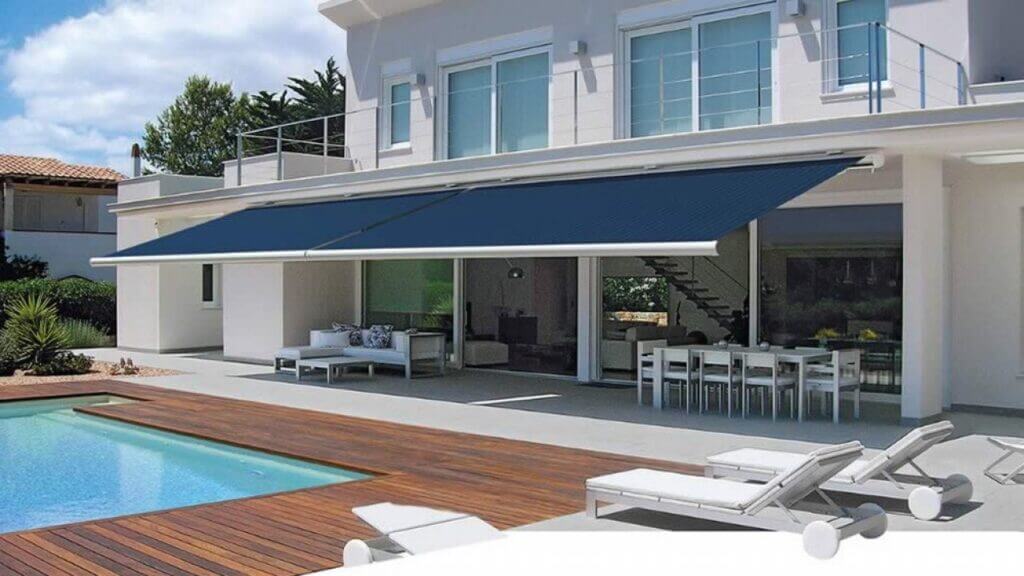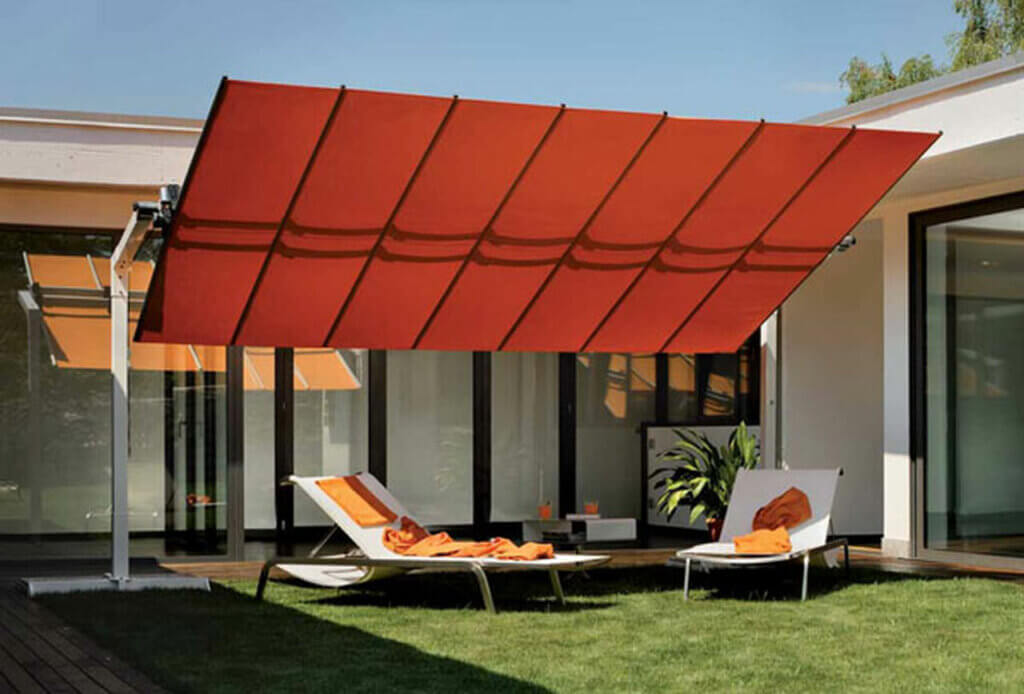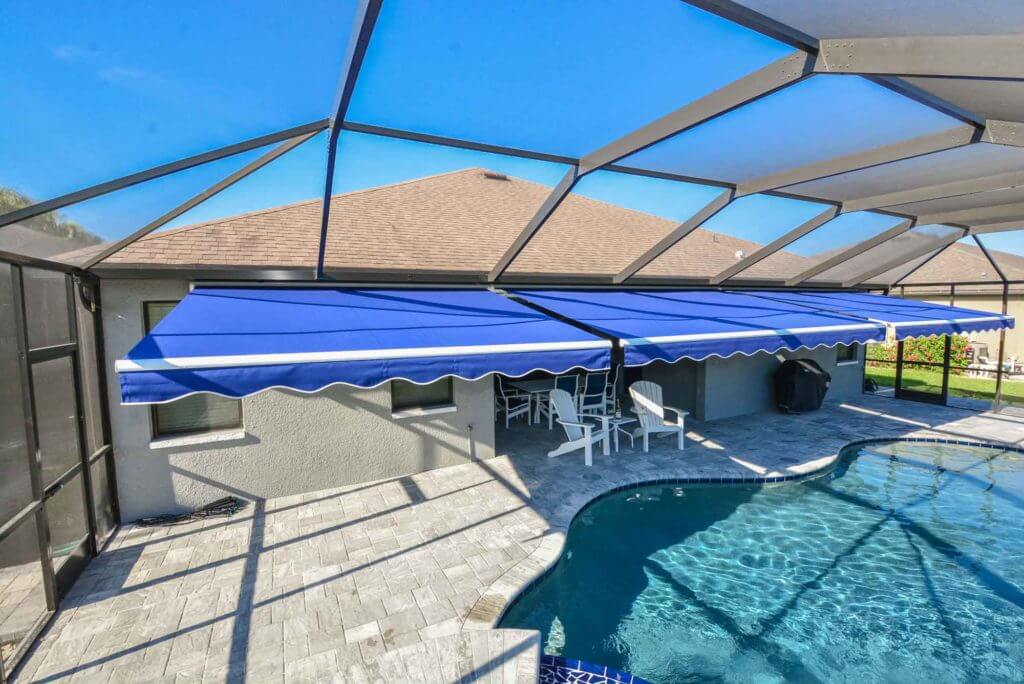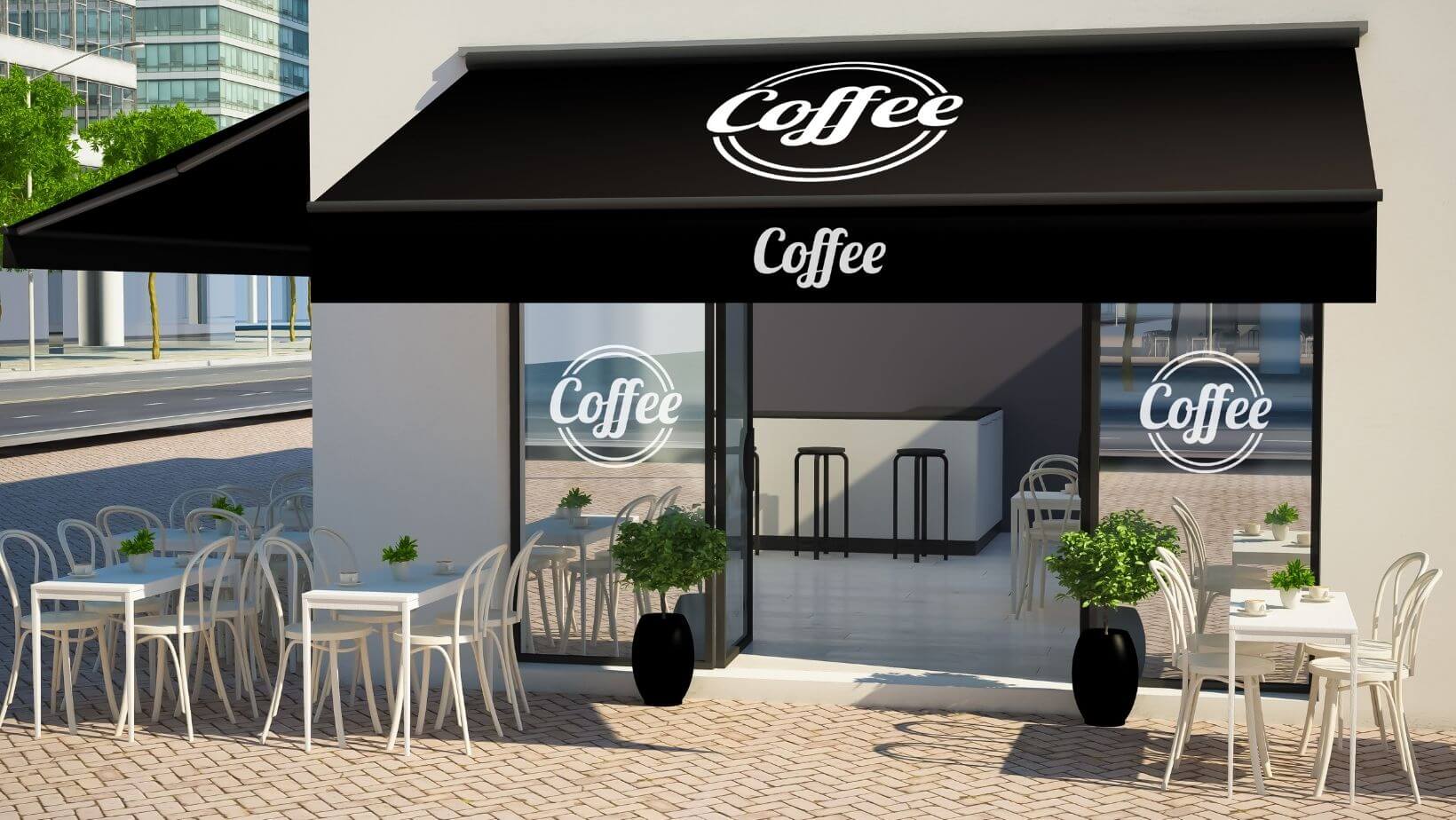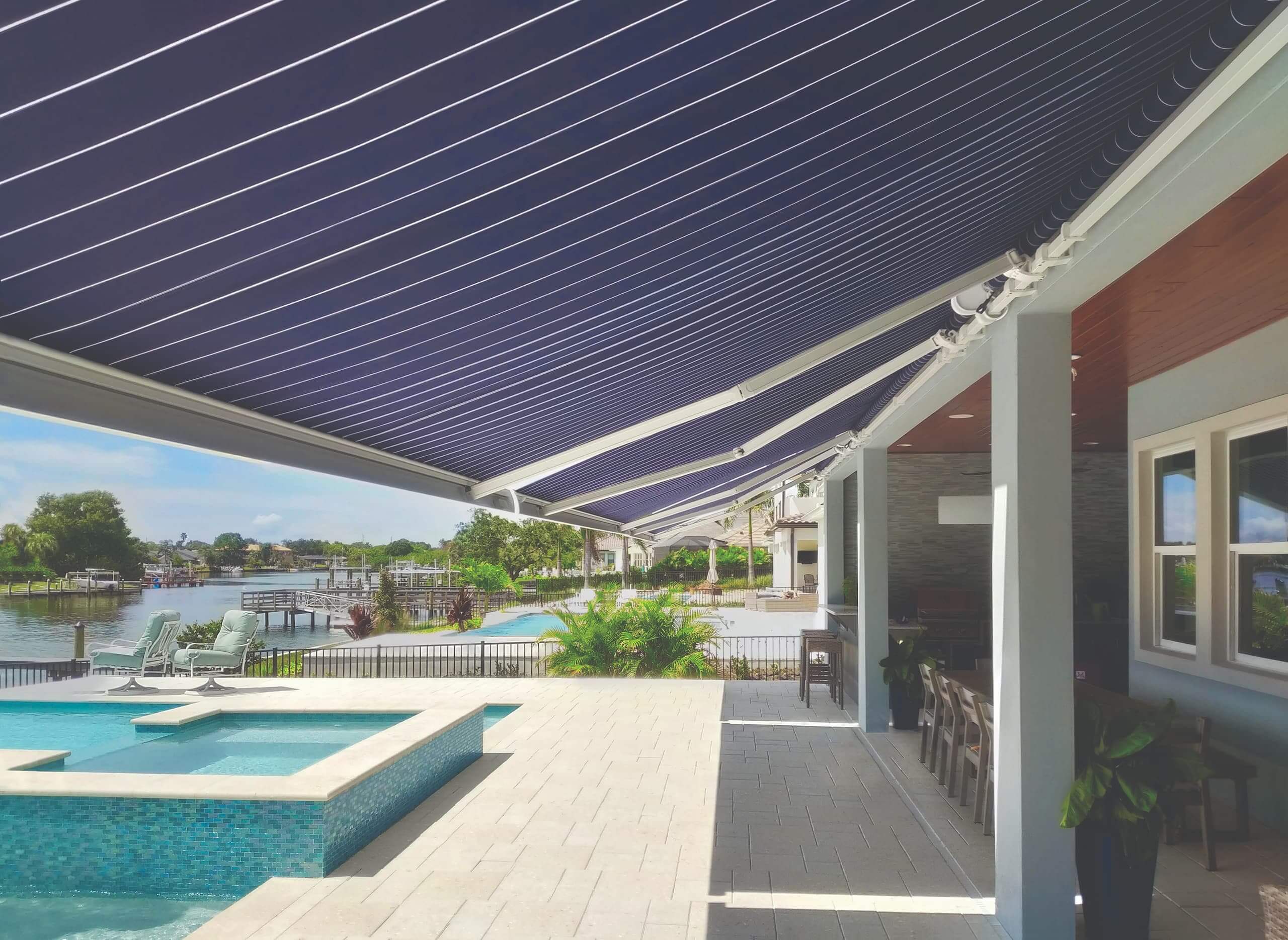When you are in the market for a patio awning, many different types will come to mind. Choosing the right awning for your home is pretty simple–after you narrow the many options you have down to manageable choices. You can then choose the best awning for your home’s outdoor oasis.
HOW DO I CHOOSE THE RIGHT RETRACTABLE AWNING FOR MY HOME?
The operation of your patio awning is very important to get the right match for your situation. Retractable awnings are made of fabric in exciting and bright colors. You can close them when they are not in use or open them fully when you need respite from the sunlight and heat. Retractable fabric awnings are long-lasting because the sun isn’t beaming down on them all year round. They roll up into a housing that is protected when not in use. It is important to remember that a retractable awning does need to be closed in strong winds, rain, or snow to protect it from twisting the frame or damaging the fabric.
OPTIONS TO MAKE AN AWNING RIGHT FOR YOU!
There are many different options to consider when adding an awning to your home furnishings, such as its materials, how much shade you can expect from its mounted position, whether side panels can help with shading, and of course the awning’s size and projection.
MATERIALS
Retractable awnings are constructed of fabric and aluminum metal. Aluminum frames are sturdy and built to withstand excessive winds and other environmental factors. There is also usually a choice of frame colors. Retractable aluminum awnings can extend to any desired projection up to their maximum outward length, usually between 10ft-14ft. Their fabrics come in a wide variety of solid and striped colors, giving you many options! The best fabric for outdoor awnings is the Sunbrella brand. It is the most popular and long-lasting fabric for awnings. It stands up to wear with long-lasting strength, is comfortable and soft to the touch, easy to clean, and fade resistant.
ANGLE
The angle of the awning is very important for blocking the sun and depends on what direction your patio faces as to what angle is best for you. Choosing a retractable awning will ensure that your awning is at the right angle to block the most sunlight and heat possible. Keep in mind that the more coverage you need for a larger area determines the need for a bigger drop to optimize blocking the sun.
SIDE PANELS
Side panels are a great option for extra sun protection in the summer. They offer privacy on your patio as well as protect your outdoor furniture. In the winter, side panels can keep your patio much warmer by blocking the wind.
SIZE
When you have a patio awning installed, its size does matter. There are no “standard” size patios, so you should choose a custom awning. Direct Awnings’ representatives will come out and measure the patio’s horizontal width and its outward extension to determine how far the awning needs to project outward to cover the entire patio area. They will then assess the direction your patio faces, which will help determine how much the awning will block the sun as it “travels” throughout the day. In some cases, patios are quite large and may require more than one awning, or a larger awning, to cover the entire space.
COLOR
When you choose to go with a fabric awning, you will need to decide on the color or colors that best match your home. You can choose from solids or stripes, and lighter or darker colors that complement the overall exterior look of your residence. Lighter colors are generally preferred because they block and reflect the sunlight and heat the best and make for a brighter appearance when sitting beneath the awning.
After reviewing the different types and styles of awnings as well as the materials and options, you should have a pretty good idea of what you want and need for your patio awning to get started. Direct Awnings is a local leader in retractable awnings solutions. Contact us today to learn how we can help bring your awning dreams to life!


